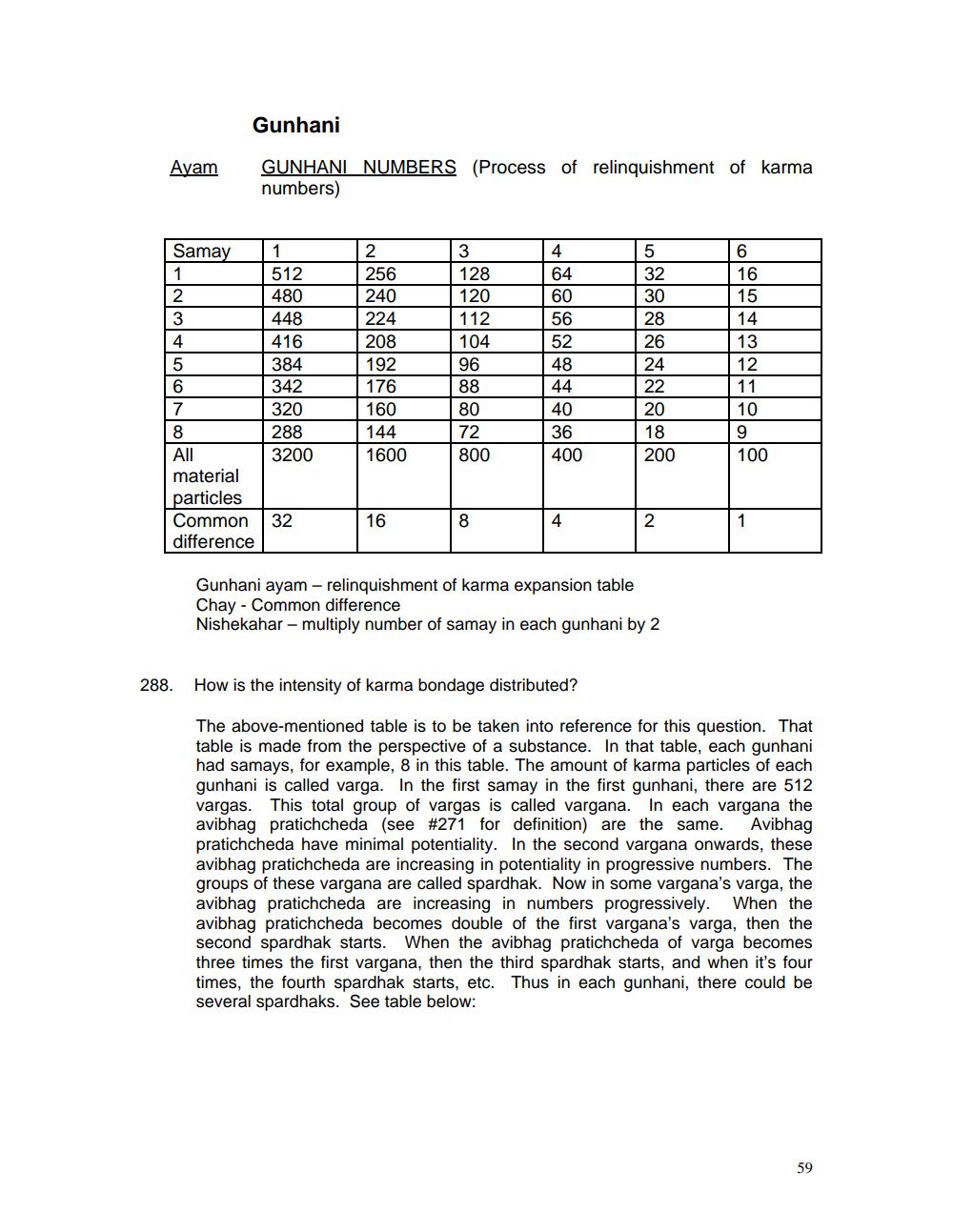________________
Gunhani
Ayam
GUNHANI NUMBERS (Process of relinquishment of karma numbers)
Samay
3
32
16
30
1 512 480 448 416 384 342
28
14
2 256 240 224 208 192 176 160 144 1600
128 120 112 104 96 88
26
4 64 60 56 52 48 44 40 36 400
24
12
11
80
10
320 288
22 20 18 200
72 800
3200
100
ΑΙΙ material particles Common difference
32
Gunhani ayam - relinquishment of karma expansion table Chay - Common difference Nishekahar - multiply number of samay in each gunhani by 2
288.
How is the intensity of karma bondage distributed?
The above-mentioned table is to be taken into reference for this question. That table is made from the perspective of a substance. In that table, each gunhani had samays, for example, 8 in this table. The amount of karma particles of each gunhani is called varga. In the first samay in the first gunhani, there are 512 vargas. This total group of vargas is called vargana. In each vargana the avibhag pratichcheda (see #271 for definition) are the same. Avibhag pratichcheda have minimal potentiality. In the second vargana onwards, these avibhag pratichcheda are increasing in potentiality in progressive numbers. The groups of these vargana are called spardhak. Now in some vargana's varga, the avibhag pratichcheda are increasing in numbers progressively. When the avibhag pratichcheda becomes double of the first vargana's varga, then the second spardhak starts. When the avibhag pratichcheda of varga becomes three times the first vargana, then the third spardhak starts, and when it's four times, the fourth spardhak starts, etc. Thus in each gunhani, there could be several spardhaks. See table below:




